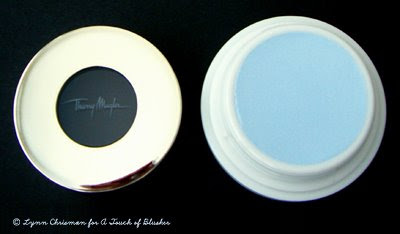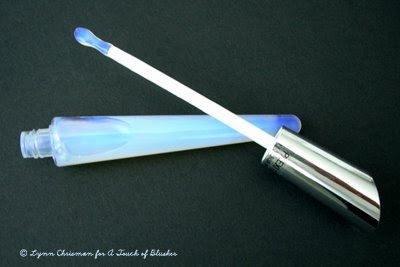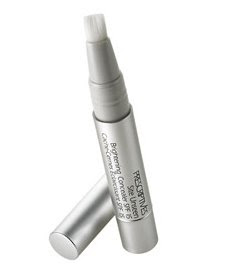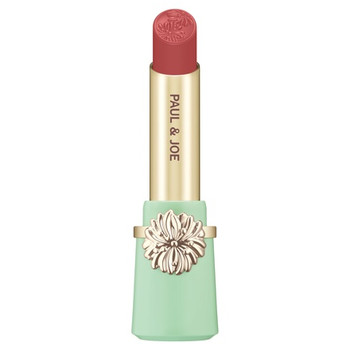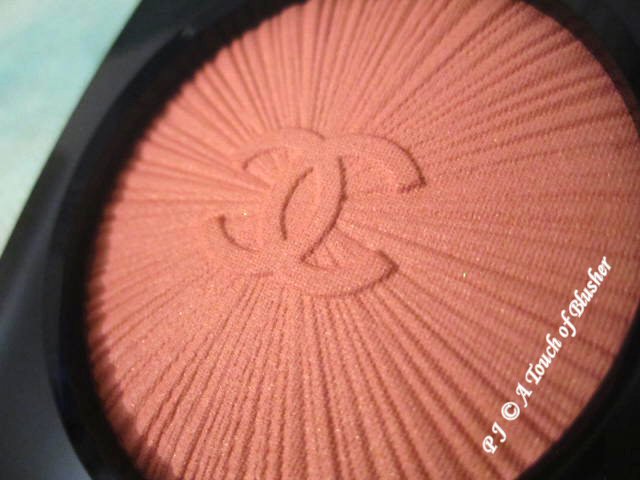Many major Japanese foundation lines categorize their shades into three groups:
– Neutral Ochre (OC) shades
– Yellow-toned Beige Ochre (BO) shades
– Pink-toned Pink Ochre (PO) shades
(Notice that some brands don’t carry PO shades.)
Sometimes the shade name can vary. (Coffret D’Or’s pink-toned shades are called Soft Ochre shades.) But, on a typical shade chart, neutral shades are usually in the middle, with pink-toned shades on the left and yellow-toned shades on the right. Below is the shade chart for Coffret D’Or’s Lasting Power Pact UV:
(Since most Japanese makeup lines are only sold in Japan or in East/ Southeast Asia, the foundation shades are not made to suit a wider range of complexions. If you are of Caucasian descent, then you can probably find Japanese foundation shades that suit you. If you are of Latina or Afro-Caribbean descent, then most Japanese foundations might be too light for you. But I have had good feedback from readers of Afro-Caribbean descent on Japanese loose powder products, which are usually translucent and can work for most complexions.)
However, not all Japanese foundation shades are categorized like what you see above. Other brands use a linear presentation of the shades and the shade names don’t suggest their undertone. Below is Paul & Joe’s Protective Fluid Foundation N:
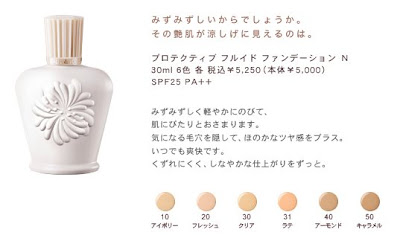 (Paul & Joe Protective Fluid Foundation N)
(Paul & Joe Protective Fluid Foundation N)(image from www.paul-joe-beaute.com)
(If I have to pick a shade only by looking at the swatches here, I would first eliminate the two lightest shades, 10 and 20. I tend to avoid peachy/pink-toned shades, and 30 looks like a shade that might work for me as it looks slightly more yellow-toned than the neighboring shades.)
Having to choose a foundation shade on-line can be very difficult. (I can occasionally choose the wrong shade even when I can see all the shades in person…) But once you have some experience, things will get a lot easier.
(Sometimes it might be worth learning to recognize the Japanese characters for the three shade groups. Please refer to the Primavista shade chart for the characters (those printed within the color swatches). The names happen to be the same ones used by Maquillage, so you will be able to make more sense of the shades you see for Maquillage’s Lasting Powdery UV at the top of this post.)
Are you ready for some on-line browsing? Tomorrow I will talk about some popular Japanese base makeup lines.
Related posts:
Jill Stuart Moist Silk Foundation
{ 22 comments }





